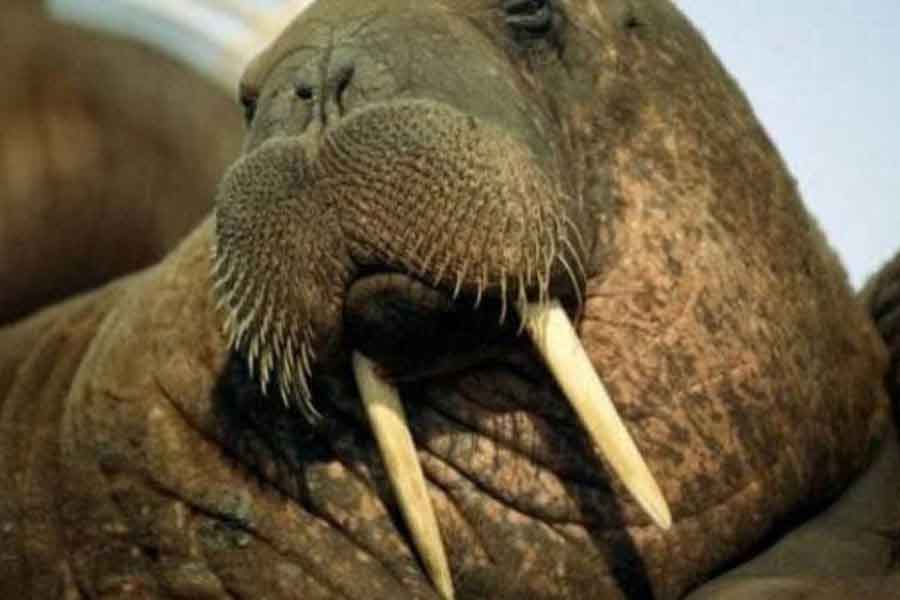
Arctic seas are often the ideal habitat for walruses, these enormous representatives of the pinniped family, whose males, usually larger than females, can weigh up to 1,700 kilograms at the beginning of winter when they are well-fed with blubber.
At first glance, walruses can be identified by the two large tusks protruding from their mouths, which have the quality of the finest ivory. These large tusks, which are actually extremely developed upper canines, are characterized by their continuous growth, which can give us an idea of the animal’s age. In adult specimens, they can measure a little over a meter and weigh about five kilograms. The male’s tusks are usually more curved than the female’s, which facilitates sex identification, especially in juveniles.
If we adopt the principle that nothing in nature is superfluous, these hyper-developed teeth must serve important functions. In fact, their main function is to dig into the muddy bottoms to obtain their food, which consists of mollusks, crustaceans, and echinoderms. While walruses are shy and reclusive animals, they do not hesitate to use their tusks as defensive weapons when threatened. Another function is to serve as a point of support when walruses slide on the ice, which is why they were given the scientific name Odobenus, which means «one who walks with teeth» in Latin.
Among their main predators are orcas and Eskimos, who use their meat, blubber, skin, bones, and tusks – in short, every part of the animal. This pushed them to the brink of extinction. Today, protected by strict laws, the danger seems to have been averted. However, the herds of giant tuskers that once descended from the Arctic ice to European shores no longer do so.
«You cannot defend what you do not love, and you cannot love what you do not know.»

